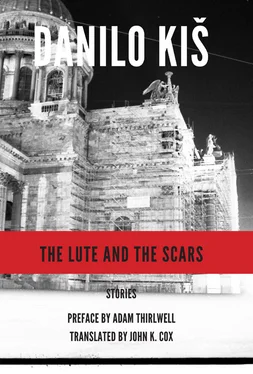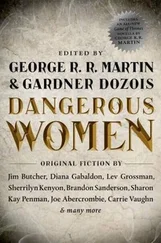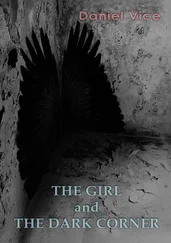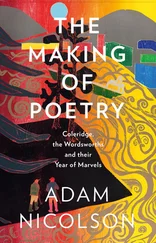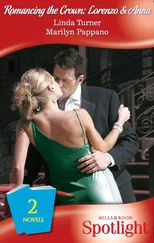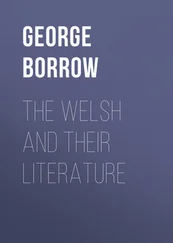“Yes,” said the nurse, taking her change purse out of the pocket of her apron.
“Here you go,” the nurse said as she laid the coins on the night-stand next to the patient’s bed; they vibrated on the marble top and then the noise abruptly stopped.
“Doctor! Doctor!” the nurse called out. “He’s stopped breathing. Look at the monitor. His heart’s stopped beating.”
“Summon the director quickly,” said the doctor. “You, Nurse, you paid the fare for his ride on Charon’s ferry.”
A
( The magical place )
From Kotor (Kotor is located in the Zeta region of Yugoslavia, on the Gulf of Cattaro, a bay off the Adriatic) you must set out at around five in the morning. After an hour of driving up the steep serpentine curves, you have to stop somewhere and wait.
The day must be clear, but there have to be a few white clouds in the west that are reminiscent of a herd of white elephants.
Then you have to let your eyes take in the sea, the mountains, the sky.
And then the sky, the mountains, the sea.
And you have to know for certain that your father traveled this same stretch of road, either on a bus or in a taxi he had hired in Kotor, and you have to be convinced that he beheld this same sight: the sun popping into view in the west from behind clouds that looked like a herd of white elephants; the high mountains dissolving in mist; the inky dark blue of the water in the bay; the city at the foot of the mountains; the white ship putting in at the jetty; the soap factory where thick smoke gushed into the air from chimneys and enormous windows glowed with fiery light.
You also have to take note of those chirping crickets (as if a million wristwatches were being wound up), for they are otherwise so easily forgotten, the same way it’s possible not to notice, because of its omnipresence, the smell of sagebrush at the side of the road.
Then the thing is to forget everything else, and to observe from this godlike vantage point the meeting of the elements: air, earth, water.
If all of these conditions are met, you will acquire an experience of eternity that Koestler called “oceanic feeling.”
PS:
A friend of mine, a press photographer, took pictures, with the permission of the captain, on board a Soviet cruiser that had anchored at Kotor. Afterward, from land, he photographed with a wide lens the ship and the landscape around the bay. When he developed the film, it was as black as night.
The awareness of eternity, the “oceanic feeling,” yielded, independent of any technique of brouillage , only blots, red, black, or green, insofar as the senses of hearing, smell, and sight were unavailable during the taking of the photographs.
My father viewed this same scene in 1939 (five years before he disappeared at Auschwitz) and in 1898 so did Mr. Sigmund Freud, who went on to have his famous dream about the three Fates.
B
( The worst rathole I visited? )
From outside:
The house is obscured on one side by the village administrative building, on the other by a wooden stable, and on the front side by a short beech tree. The house is made of dried mud, the room of darkened tiles that have shattered or slipped in places. The door is small, so that a grown person can enter only by bending at the waist. A window, half a square meter in size, looks out onto the tree, which stands at a distance of about ten meters from the shack. This window opens outward. On the other side, facing the “garden,” where the outhouse is located, along with a neglected tract of untilled land, overgrown with weeds, there is a round opening for light built directly into the wall. The pane on it is partially broken and the hole is plugged up with rags.
From inside :
The space is divided by a thin mudded wall: the bigger side measures 2 m x 2 m, the smaller one 2 m x 1 m. The first one is called a “bedroom,” the second one a “kitchen.” The walls have been whitewashed with an ochre-colored preparation made by dissolving clay in lukewarm water. The effects of dampness and sunshine are such that this coating blisters or develops cracks that look like scales or the faded canvases of Old Masters. The floor is also of pounded clay that lies several centimeters lower than the surface of the yard. On humid days the clay smells of urine. (A shed for animals once stood here.)
In the larger room there are two wooden bed frames and two chests of drawers that are pulled out twenty to thirty centimeters from the wall. A rag carpet is stretched diagonally across the floor from the entranceway to the kitchen. In a corner of the kitchen stands a stove made of sheet metal. Two or three pots hang on heavy nails, and a wooden trunk serves as a sleeping platform and a pantry. Next to the stove lies a pile of decaying wet spruce cones for heating. There’s thick smoke in the kitchen, so thick that the people who sit on the chest or on the short wooden stools can barely see. Their voices work their way through the smoke as through water.
“Here was the alarm clock. On this nail,” I say to the man who brought me here in a car from Budapest. “A drunken Russian sailor took it in 1945.”
“Someday there will be a plaque here,” the man noted ironically as we were leaving the house. “It will say: HERE LIVED THE YUGOSLAV WRITER DANILO KIŠ FROM 1942 TO 1945.”
“Fortunately, the house is slated to be torn down,” I say.
“That’s a shame,” said the man who had brought me here in a car from Budapest. “If I had a camera with me, I’d take some pictures of it.”
PS:
Texts A and B are connected to each other by mysterious bonds.
THE MARATHON RUNNER AND THE RACE OFFICIAL
Although it does not entirely make sense in terms of chronology, I am convinced that it was from the late Leonid Šejka, the painter who referred to himself also as a “classifier,” that I first heard this story. Whether he read Abram Tertz’s book in manuscript form or someone related the story to him verbally, I do not know. But at any rate I’m sure that it was he who first recounted it to me. (He followed the winded runners with his eyes as they jockeyed for position, in the grip of terrible corporeal and mental strain amid an imaginary landscape to which he gave form and color. With three fingers of his right hand pressed together for emphasis, he sought the correct word and the right expression as if testing with the tips of his fingers the smoothness of a pigment or the thickness of a coat of paint; meanwhile his hand remained immobile, strangely still, as if paralyzed: in it a cigarette burns slowly while its ash remains intact, vertical.)
Here’s the story:
The marathon runners are warming up for the race in their shorts and tank tops to which bibs with large numbers are affixed. Among them were some who were participating for the first time, but there were also seasoned champions there, as well as one tall bony man, fifty years old, who was a celebrated veteran of many races and a winner many times over in the past, the pride of his nation.
It’s early autumn or late spring. Above the main square, a banner inscribed with the word “Start” stretches from the baroque town hall to a building housing a restaurant. Ladies are coming out of morning Mass, leading by the hands little boys with carefully combed hair. Young women in long skirts and lace collars are chatting gaily, their white gloves still in place.
When the race official lowers his flag, the runners take off with feigned unconcern. They have twenty-five kilometers in front of them, and even the neophytes know that they aren’t supposed to put their bodies and minds into high gear until much later.
Читать дальше
